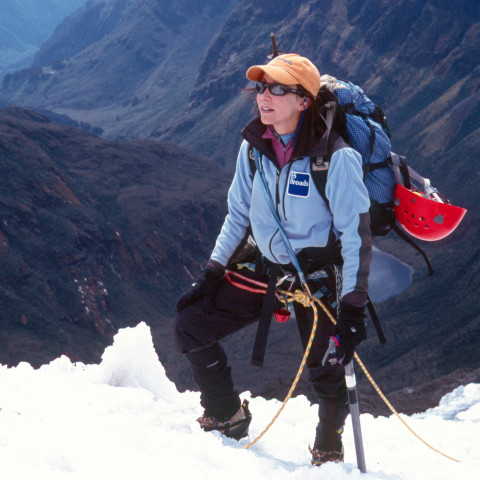Alison Levine: How to Keep Going When You Think You Can't
We've all hit the wall: that moment when carrying on feels impossible. Polar explorer Alison Levine—who has skied to both poles and summited Mount Everest—explains how to find the will when you think you've got nothing left.

Photo: Harry Kikstra
1. Remember that backing up is not backing down.
Climbing a mountain is never a straight shot to the top. Because of Mount Everest's altitude, you spend two months on the mountain acclimatizing your body (you know, so you don't keel over and die), which means that every time you move forward, say from Basecamp to Camp 1 or from Camp 1 to Camp 2, you turn around and climb all the way back down to Basecamp and start over again the next day. Although going backward is extremely frustrating, it's not a setback. It's an opportunity to regroup and regain some strength. One of my favorite phrases is, "Backing up is not backing down." When you return to where you started, it's not defeat, it's not backing down. So often we think in order to achieve something we have to go in one particular direction, but I've learned from my experience on mountains that progress doesn't only move in one direction.
2. Give 150 percent to one thing at a time.
Initially when I was working full time while training to lead the first American Women's Everest Expedition, I wasn't doing a good job of anything. I would go to the gym at crazy hours—between midnight and 5 a.m.—and then I wouldn't get enough sleep. That left me unfocused at work and meant I couldn't give my colleagues what they deserved to get from me. So I thought, "During the week I'll focus on work, and when I get home I'll fundraise, but I'm going to save my training for the weekends." By compartmentalizing, I could devote my best self to each task. It's not just about getting everything done, it's about getting things done the way they should be.
3. If you can't pull, you can dig.
When I was skiing to the South Pole, I had a really hard time pulling my 150-pound sled full of gear across the frozen terrain. I kept slowing my team down because my 5-foot-4 frame, no matter how hard I trained, couldn't keep up. I felt so defeated and even convinced myself everyone on my team hated me for it. Instead of giving in to those thoughts, though, or pushing myself too hard in some radical effort to overcome my size, I compensated by doing things I was good at. My taller teammates had a hard time shoveling snow when we made camp every night, so guess what I did? I shoveled like a maniac. In return, they carried some of the gear from my sled, which made pulling my weight—literally—a manageable feat.
4. Put your fear to work.
Here's what you need to know about fear: It won't kill you. You can be scared from morning until night, and it only becomes dangerous when you let it paralyze you. Whether you're at 29,000 feet or sitting at a desk back on earth, that spark of fear can help you stay ahead of the game. If you acknowledge it, welcome it and refuse to let it paralyze you, you'll make smarter decisions every time.
5. Don't assume failure is final.
Fun fact: the first time I climbed Mount Everest with the American Women's Everest Expedition, I had to turn back less than 300 feet from the top. After months of training, fundraising and media appearances, we failed. Coming up short on that climb in 2002 gave me the skills to summit Everest in 2010. If you only pursue challenges you know you can accomplish, you're never going to achieve anything worthwhile.
Alison Levine has climbed the Seven Summits and skied to both the North and South Poles. She is an expert on leadership and the author of the New York Times best-seller On the Edge: Leadership Lessons from Mount Everest and Other Extreme Environments.



